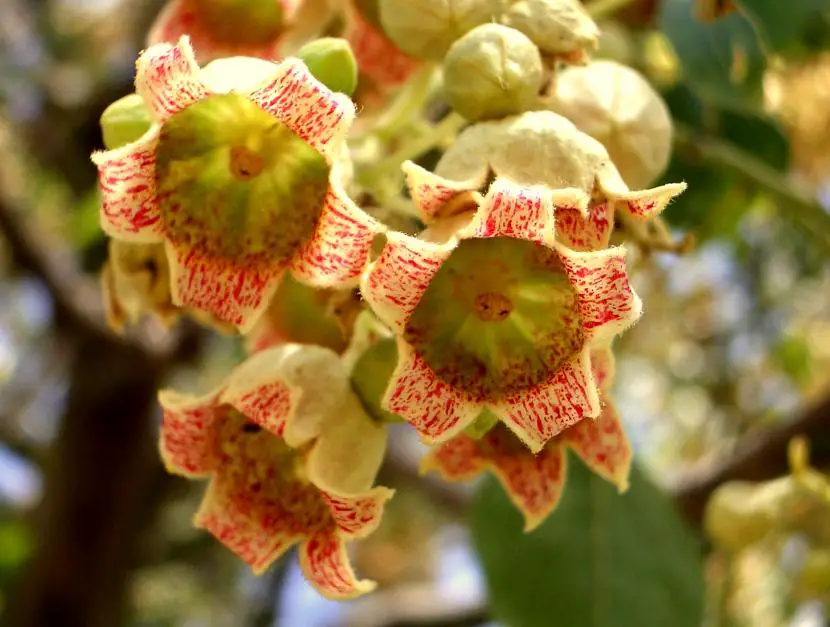
B. populneus flowers
The brachychiton They are a very adaptable genus of trees capable of decorating your garden in a spectacular way. In addition to being adaptable, its beautiful flowers will give a fresh color to your favorite green area.
Let’s get to know them in depth.

B. populneus
The Brachychiton genus comprises around 30 tree species, deciduous or evergreen depending on the climatic conditions of their habitat. Thus, for example, we have B. acerifolius Originally from the east coast of Australia, it loses its leaves after a few months of drought; Meanwhile he B. populneusLiving in humid areas, you do not need to lose them. In our latitudes, however, An evergreen tree can behave like a deciduous tree if it has to endure temperatures to which it is not used during the winter, or if there have been several months of drought during the summer.

B. acerifolius in flower
These amazing trees have a rapid growth (except B. acerifolius and B. bidwiliiwhich are somewhat slower) up to a height between 10 and 30 meters. Its crown diameter as well as its trunk thickness varies according to the species, but, in any case, they are suitable for medium to large gardens. There are some that are highly recommended for small gardens, such as B. populneuswhich is used as urban flora in many cities with a warm climate.

B. rupestris
The Brachychiton are lovers of the sun and mild climate (although they can withstand low-intensity frosts), and also well-drained soil. When planting it in its final place, if your soil has a tendency to compact, you can mix it with pearlite or clay balls. In this way, the roots will not remain in the water for too long, which will help the tree to remove more leaves.

Flowers of B. bidwilii
If we talk about irrigation, this will have to be occasional. The most recommended is water once a week in summery every 15 days the rest of the year. We can take advantage, during spring and summer, to pay it with a organic fertilizer as guano -following the recommendations indicated on the container- or with worm humus -approximately, about 100 grams once a month-.
Do you like Brachychitons? Let us know.

